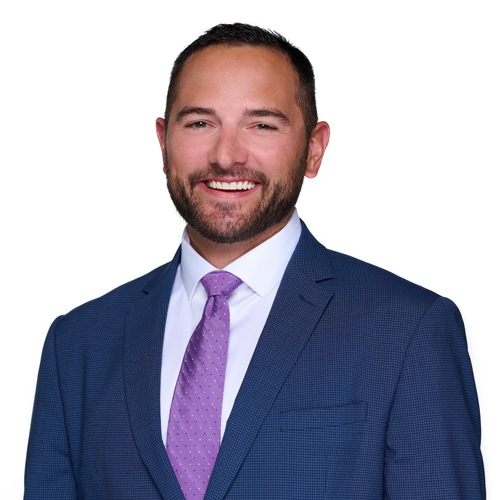If you are a high-income earner in Sarasota, you may feel that you’ve been blocked from utilizing the Roth IRA. That’s where the Backdoor Roth IRA Conversion comes in.
The Roth IRA and Roth 401(K)
One of the greatest gifts to come to retirement planning came in the form of the Roth IRA, and subsequently the Roth 401(K), in the late 90s and early 2000s. For the first time, Americans could contribute post-tax funds into their investment account and watch as those funds grew tax-free all the way to retirement and beyond.
Tax-Free Retirement
With neither RMDs nor taxes in retirement, most Americans could utilize the Roth as a convenient way to plan their retirement budget and create more complex retirement strategies to help ensure retirement success. But, it came with a catch for some. You couldn’t open a Roth account if you earned too much money.
Roth Income Limitations
And, technically, you still can’t. If you file taxes as a single person, your Modified Adjusted Gross Income (MAGI) must be under $153,000 for the tax year 2023 to contribute to a Roth IRA. For married people who file jointly, your MAGI must be under $228,000 for the tax year 2023.
The Backdoor Roth IRA Conversion
But, good news appeared in 2010 with the creation of the Backdoor Roth IRA Conversion. It allowed high-income earners to convert post-tax Traditional IRA contributions into Roth contributions. Over the last 13 years, it has survived attempts to axe it as an unfair loophole, and there is the genuine possibility of it going to the wayside. So, it would behoove you to look into a Backdoor Roth Conversion before it is too late.
Key Insights
- There are no income limits to put into an IRA.
- The conversion process is relatively simple.
- The Pro Rata Rule can leave you with a hefty tax bill.
- The Step-Transaction Doctrine may disallow the conversion.
The Backdoor Roth Conversion Process
The process is fairly simple. You make a contribution of non-deductible post-tax funds to your traditional IRA. Then, you convert those funds to Roth. To do this, you simply inform your financial institution that you wish to perform a Roth conversion. They will provide the necessary paperwork and guide you through the process.
When you file your taxes, you must report the conversion on IRS Form 8606. This form essentially proves that the contributions were indeed POST-TAX, meaning you won’t owe any taxes on the converted funds. Or will you? You may get hit with a hefty tax bill if you don’t pull off the conversion correctly.
The Aggregation Rule
The IRS doesn’t mind if you have multiple IRAs. But, for tax purposes, it views all accounts as one, hence the ‘Aggregation’ part of the Aggregation Rule. Unfortunately, having multiple accounts may cause you to overlook a crucial rule many aren’t aware of.
The Pro Rata Rule
This concept is confusing, so we will use a scenario involving a fictional character named John. John built up a sizeable 401(K) at a company years ago. By the time he left, it was worth $200,000. He became an independent contractor and rolled those funds into an IRA.
Then, years later, John hears about the Backdoor Roth IRA. Without consulting a financial advisor, he opens up a new IRA and puts $30,000 of non-deductible funds into it, meaning he has already paid taxes on them. He swiftly converts his funds to Roth using his financial firm’s instructions.
In the meantime, his original IRA has grown to $300,000.
Between his retirement accounts, he now has $330,000.
In other words, 90% of the funds are Traditional, and 10% are Roth.
This is where the Pro Rata rule comes into effect. This rule aims to discourage Americans from performing rollovers without paying taxes. It taxes the funds you convert in proportion to the overall allocation between Traditional and Roth accounts.
Regrettably, John now faces regular income tax on 90% of the $30,000 due to the Pro Rata Rule.
In other words:
- $27,000 = Taxed as Ordinary Income
- $3,000 = Tax Free
Dual Taxation?
John has to pay taxes twice on the same funds. A higher tax bill probably isn’t what he expected when executing a Backdoor Roth Conversion. John can avoid this dual taxation by converting ALL his Traditional IRA funds into a Roth, but the IRS will still hit him with a big tax bill when he pays taxes on all previously deducted contributions.
The Step Transaction Doctrine
It also may come as a surprise that the IRS may ultimately disallow your conversion.
The Backdoor Roth Conversion strategy comes attached with a potential limitation known as the Step Transaction doctrine. According to this doctrine, the Tax Court can consider that even if the individual contribution and conversion steps are lawful, they are seen as one transaction because it is evident that one is trying to work around Roth income limitations. This violation may result in a 6% excess contribution penalty tax.
Again, let’s look at John’s process.
- He opens a Traditional IRA
- He funds the Traditional IRA
- He executes the conversion in a (too) timely manner
- He receives a notification that the transaction broke the Roth contribution income limit.
The IRS won’t look at these as one step if there is enough time between each step. The issue is that the IRS won’t make us privy to the amount of time necessary to wait between steps.
So, John tries again. Armed with this knowledge, he realizes he is stuck in a pickle. The more time John waits between conversion steps, the more his non-deductible IRA funds may grow in value, increasing his tax burden. He could keep those funds in a money market account, but then he loses valuable investing time. As always, it’s complicated.
Work with a Financial Advisor in Sarasota
In conclusion, the Backdoor Roth IRA conversion is a shrewd option for high-income earners who can’t put directly into a Roth IRA. However, considering the potential tax implications and limitations inherent to this conversion strategy, such as the Aggregation Rule and the Step Transaction Doctrine, is essential.
These limitations may result in a higher tax bill, excess contribution penalty tax, and even disallowance of your conversion. To avoid any tax-related issues, it’s best to consult a financial advisor who can guide you through the process and help you execute the conversion correctly.
Are you a high-earner interested in the Roth? Click the button below to schedule an appointment.













